Running for weight loss is a productive and affordable exercise. The efficiency is that all muscle groups are working during the course of the course. It's important to run properly to lose weight and take advantage of the benefits of training. Determine which technique is better for shedding excess weight and create a rough plan for beginners.
Run at night or in the morning to lose weight - you decide. Choosing the right running apparel and choosing a training venue is half the battle. Running for weight loss can also be done at home or outdoors. It is important to use proper running and breathing techniques. There are many weight loss programs, each with pros and cons, and it is best developed by a coach, taking into account individual characteristics and possible contraindications to running for weight loss.
To have a beautiful and toned body, it is important to make physical activity an integral part of your life. Many people believe that to lose weight, following a varied and nutritious diet is enough. Yes, get rid of excess weight with the help of a limited diet. However, the skin remains sagging and sagging, and the muscles become weak. Physical exercise is very important. Running to lose weight is an effective physical exercise. Exercise burns fat and speeds up metabolism, oxygenates the body, strengthens muscles, and restores the function of the nervous system.
running to lose weight
Our way of life under the conditions of modern reality cannot be said to be correct. Daily stress, snacking, limited physical activity, and lack of sleep cause fat to start accumulating in the body, making it difficult to get rid of.
The effect of running to lose weight:
- During running, the work of all muscles starts.
- Cholesterol levels are lowered.
- Running speeds up your metabolism.
- The work of the heart and vascular system is improved.
- The circulatory system is saturated with oxygen.
- The body is purged of toxins and toxins.
- Improve movement coordination.
- The body's resistance to any infection increases.
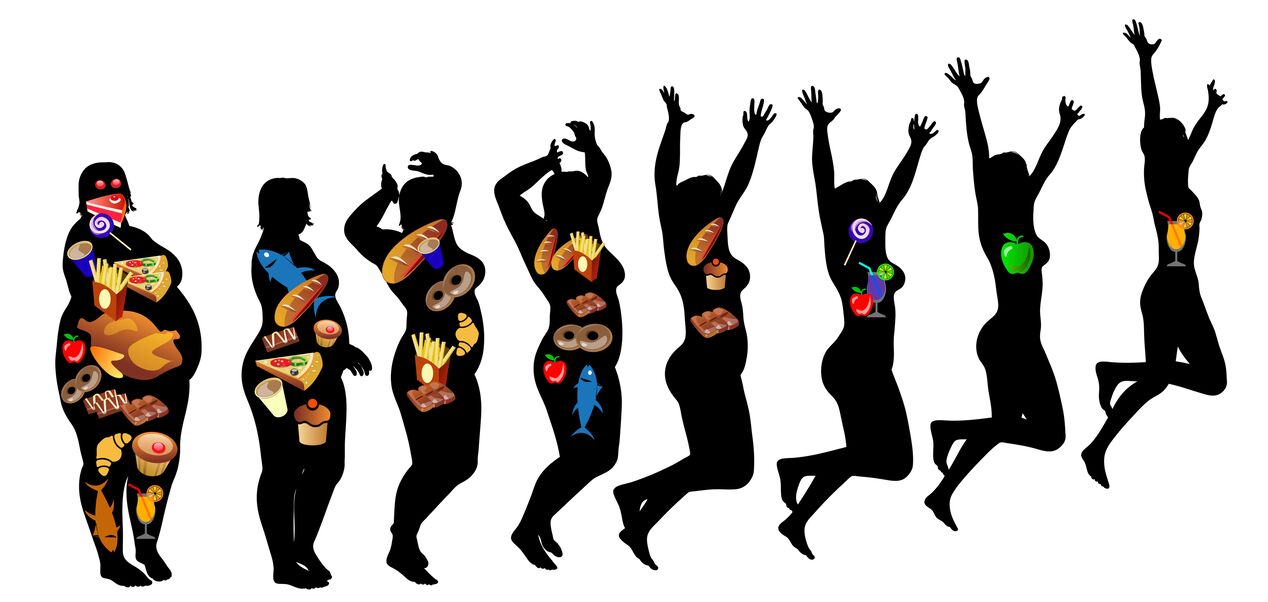
Running is for everyone. After all, it's a natural process that comes from nature. This does not require special training and any skills. Losing weight and adhering to the technique is only possible with a properly designed running program.
Correct running technique for weight loss
Before talking about what is the right weight loss run, first determine the running technique.
It is important to keep a diary of running time, mileage, daily calories and weight. This will allow you to monitor progress and predict your treatment options. Training should bring joy to someone who is losing weight, not cause exhaustion and shortness of breath.
Run
Jogging 3-4 times a week is recommended. To lose excess weight, it takes 3 months of intensive training. Before class, warm up (8-10 minutes). After that, jog for 8-12 minutes. Increase the pace (the process lasts no more than 10 minutes). The workout ends with a walk (15 minutes).
%20for%20three%20months%20helps%20with%20weight%20loss.jpg)
During the second month, the running frequency was the same as the previous month. However, this phase is not based on running, but on physical activity. During the first week, warm up (10 minutes), then jog for half an hour. Workout ends with walking and stretching (10 minutes).
In the second week, it is recommended to start the session with a 10-minute exercise walk and continue with a 15-minute accelerated run up the stairs. Jog for 10 minutes and walk for 7-10 minutes.
In the third or fourth week of the second month, the class begins with an 8-10 minute warm-up and a 10-12 minute jog. Complete skipping rope (5-8 minutes) and walking (8-10 minutes).
The third month will be tough. The first week of training begins with a warm-up and a 40-minute run. The class ends with an 8-12 minute walk. In the second week, training also began. The 40-minute jog ends with a slow walk and stretch. At the end of the month, start with a 5-7 minute walk, run uphill (12-15 minutes), then jog (5-7 minutes), and finally walk for 8-10 minutes.
If the jogging has obstacles: steps, mountains, serpentines - energy will be expended faster and, therefore, the process of losing weight will be accelerated.
back run
The fight against overweight is carried out with the help of a shuttle run - this is a short distance training (up to 100 meters). A feature of the class is that when overcoming a segment, the athlete stops and touches the marker. Training will improve coordination, build endurance, and lose excess weight.
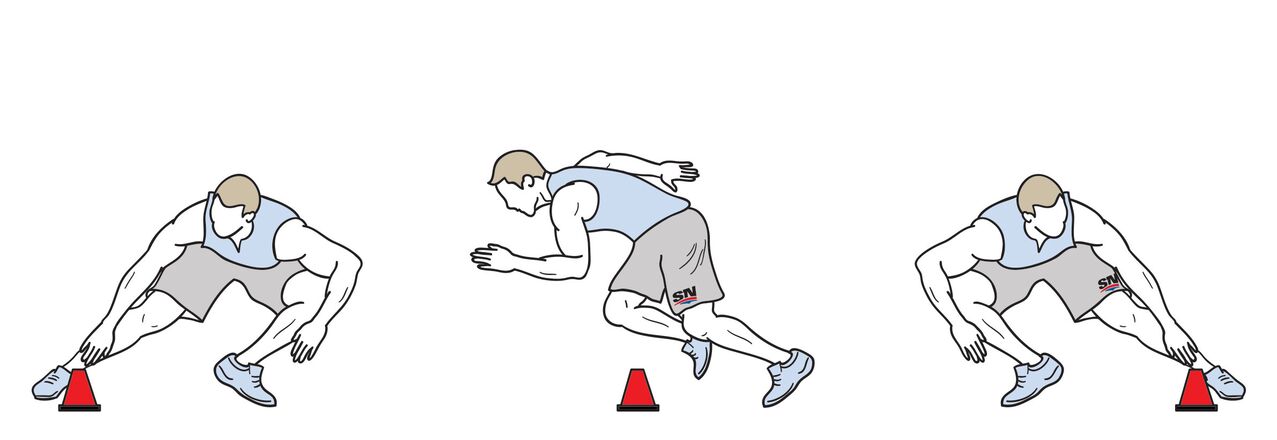
sprint
This run is characterized by the fastest speed. Due to the overloaded heart, doctors do not recommend classes dedicated to this sport.
Beginner sprint plan:
- Warm-up - 15-20 minutes of light jogging and stretching.
- 100m to 2-6km sprint race. Newbies run 300 or 500 m.
- The workout ends with a 15-minute walk or stretch. This will reduce muscle soreness and "cool down. "
Running sprints are combined with stretching and physical activity. This is an important point to speed up the weight loss process.
interval running
Interval running is good for weight loss. The upside is that fat is burned even after exercise. A feature of running is the constant change in speed.
Exercise 3-4 times a week for 10 to 35 minutes. Warm up before class. The workout ends with a walk.
Interval running program:
- Start with a jog - 5 minutes.
- Gives a boost - 3 minutes.
- The pace is not lost until the heartbeat and breathing return to normal.
- They move at an average speed for 6-10 minutes.
The way to lose weight is to alternate between 1 minute of running and 4 minutes of brisk walking. Time gradually decreases.
short distance
Many coaches recommend sprinting. Training requires minimal time, and correction of problem areas occurs quickly.
Short distance activities include:
- run back;
- sprint;
- Run intermittently.
Exercises that increase the load "dry" the muscles.

long distance running
With the help of long-distance running to lose weight, the work of the nervous system, heart, and blood vessels is getting better and better. For effect, it is recommended to incorporate elements of physical activity and interval training into the program.
Running technique is important if you want to lose weight. However, according to professionals, the location of future training is more important.
- ladder. Effective weight loss method. Especially if you have cellulite. It is enough to go to the 5th floor every day. Start 2-3 times. The load is increasing every day. Running on stairs combined with wraps will give the greatest effect.
- stadium. Equipped with special coating, will not let you hurt and slip. Plus, having like-minded people coming to the pitch won't put you at ease.
- asphalt road. Popular place for running. Many doctors object to jogging on the sidewalk because of the potential for vascular damage. It is recommended to buy shoes with shock absorbers, which can reduce the impact force.
- Gym. Suitable for sprint training, shuttle running.
- house on jogging track. A great way to increase and decrease loads during a workout. Start with a warm-up and a slow walk (8-10 minutes). Speed increases to 6-7 km/h (4-6 minutes, incline - 6 degrees), after that - 7-10 km/h. The class ends with a high-speed run (3 minutes, no incline) and a walk.

Getting rid of excess weight is just running in place. Perfect for those who are embarrassed to exercise in public. You need to train at home for 15-20 minutes a day. They engage in two ways: by raising the knees to the chest or touching the back of the thighs with the heels. A systematic workout will help you lose 5kg in 1 week.
weight loss plan
The coach recommends sticking to the training plan. You need to run every other day. During training, pay attention to your heart rate. Typically, they do not exceed 50-60% of the initial metrics.
Fat burning occurs when the heart rate increases by 75%.
A mandatory rule of the program is to add 3-4 minutes of training time per week. And in order to keep the muscles from being overworked, it is recommended to run once every 4 weeks at the last time.
type of run |
Calories burned per 1 kg of body weight per hour (kcal) |
Calorie consumption per 60 kg of body weight (kcal) |
|---|---|---|
classic running |
13. 3 |
798 |
run up the stairs |
12. 9 |
774 |
Classic Loader:
- 1 month. There is a heart, the preparation of muscles, the development of proper breathing. During the first week, the class lasts 15 minutes. Training takes place at a slow pace with no acceleration. Add 5 minutes per week. In the third week, the classic run can vary with acceleration (about 8 minutes).
- 2 months. adapt. Increased physical activity (8 minutes) is recommended. The warm-up time is 15 minutes. A classic run with acceleration and rhythm changes.
- 3 months. fat burning. The training time reaches 1 hour. 40 minutes for running and the rest for vigorous physical activity, stretching, warming up.
Focus on your own feelings. If during the transition to this stage the body "expresses" unavailability in the form of darkened eyes, severe shortness of breath, tachycardia - they are still in the previous stage.
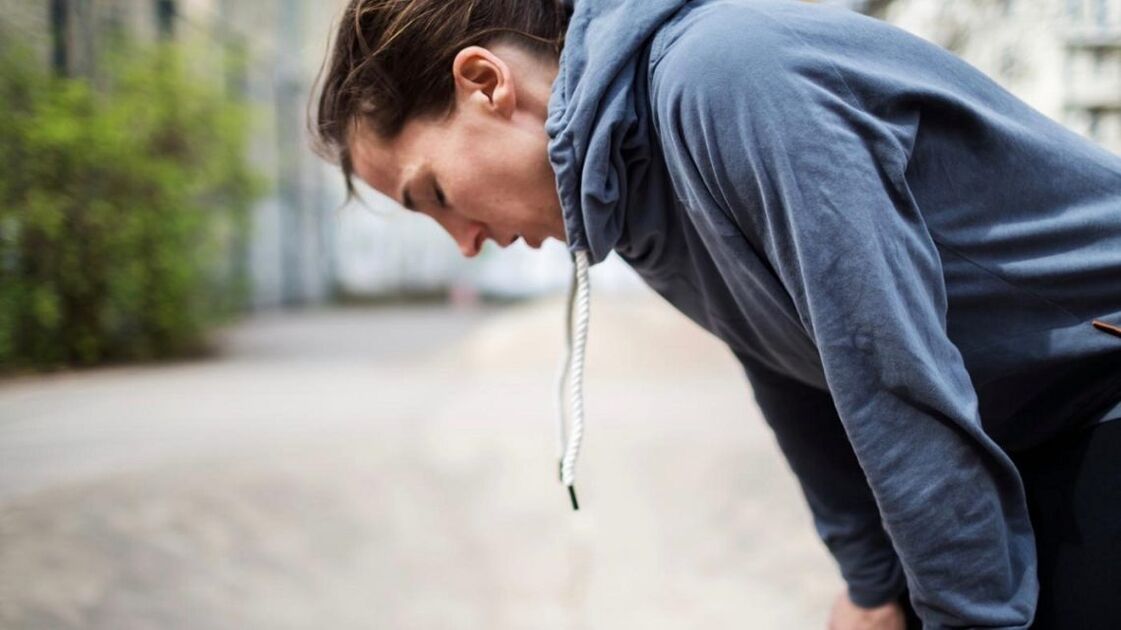
How to do jogging to lose weight?
Many people think that running is an easy activity, but it's not. During training, everything matters: proper breathing, heart rate, load, speed, equipment, and even jogging time.
It was the timing of the course that caused controversy among many. Some people think it's best to run in the morning to lose weight, while others tend to think that jogging in the evening is an option for shedding excess pounds.
Morning run - from 6. 30 to 7. 30. At this point, physical activity is maximally perceived by our body. There's no point in bothering yourself with exercise every morning. Engage in a day.
Unfortunately, this time is not for everyone, but you shouldn't be discouraged because there are other peaks of activity - from 11. 00 to 12. 00, and from 16. 00 to 18. 00.
During the jog, they monitored breathing, heartbeat and pulse. The time to resume normal rhythm after the course is no more than half an hour. They control their pulse, heartbeat, distance traveled and even number of steps with the help of special electronics.
The running surface is also important. It's best not to train on asphalt. If you can go through a forest park or dirt road, give them priority. In the absence of possibilities, special shoes with shock-absorbing soles were chosen.
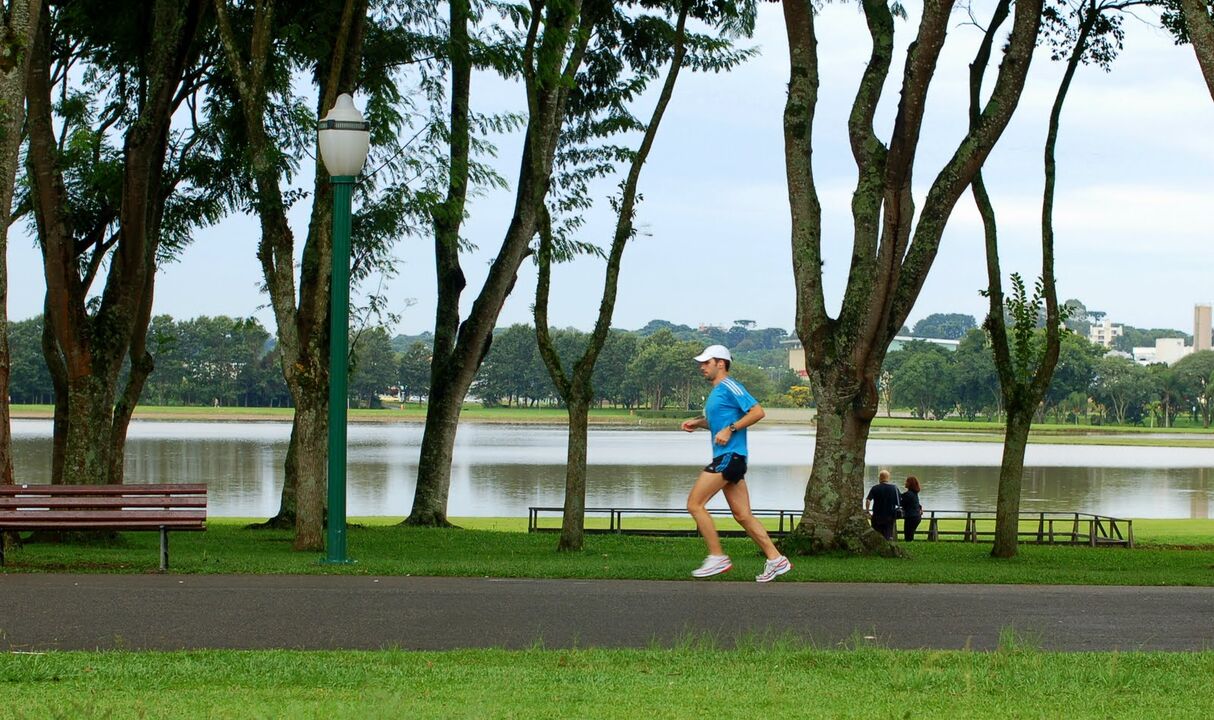
Air temperature is also taken into consideration if you want to run. Trainers recommend against exercising in the heat (temperatures above 25 degrees). In summer, they run in the morning. In severe frosts, training is also not recommended because of the risk of getting too cold or contracting a virus.
Making the process less monotonous and changing the training trajectory. Ideally, plan your route in advance.
As for the length of the run. It won't last more than an hour, and it won't be less than 30-40 minutes. In the case of a monotonous workout, the fat burning process starts just after the specified time has elapsed.
If you want to run, the level of fitness is taken into account. In the case of obesity, professionals recommend starting with walking. The first 20 minutes. Training takes place every other day. In the following lessons, the duration is increased by 5 minutes. After 3 weeks, they started to pick up the pace.
If you feel a surge in strength, activity, vitality, and a good mood after a run, then the training is on the right track. In case of drowsiness, fatigue, stimulation, reduce the load.

During training, it is advisable to listen to your body. They change their pace, accelerate, and struggle to understand what load is optimal.
Walking at the end of your workout is important to get your breathing and heart rate back to normal. After training, you can take a cool shower and drink a glass of water. Eat breakfast 1 hour after your run.
If you want to lose weight, combine physical activity with proper nutrition. It is recommended to avoid:
- flour, sweet, fried;
- Alcohol;
- dinner.
Eat more vegetables, fruits, grains, and white meat. Don't forget about liquids. It is recommended to drink at least 1. 5 liters of water per day. Eat 1. 5 hours before class.
After the first workout, the muscles are constantly sore and injured. This period must be experienced and under no circumstances should you drop the course.

Possible contraindications to jogging for weight loss
Unfortunately, some people do not recommend overloading. Contraindications to running include:
- Heart and Vascular Disease.
- High blood pressure, often accompanied by seizures.
- Varicose veins.
- Acute cold, body temperature rises.
- inflammatory process.
- Thyroid disease.
- Asthma and other conditions of the respiratory system.
If you have any medical conditions in the chronic phase, if you want to lose weight by running, see your doctor.
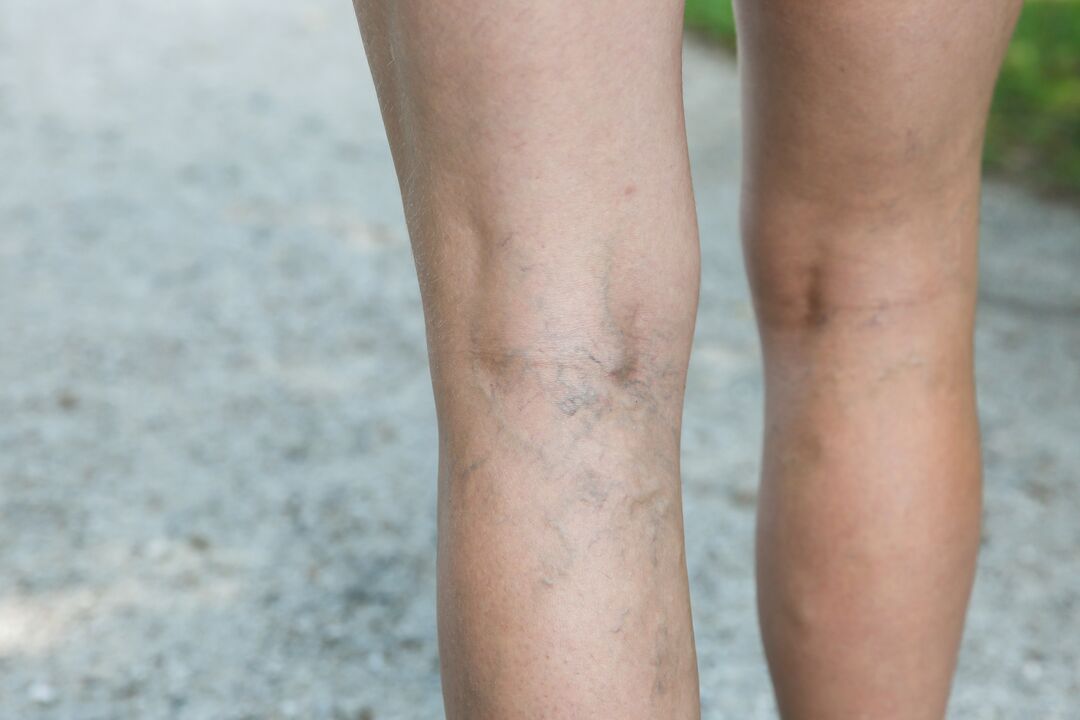
Running to lose weight: choose the right equipment
The choice of clothing is important for sports. After all, convenience and comfort while running depend on its quality.
Compact and bulky equipment can cause inconvenience and discomfort in the classroom. If they decide to run in the winter, they choose special thermal clothing for this, to keep the heat in and prevent the cold.
An important part of a runner's clothing is the shoes. Tight sneakers are not recommended. They can rub against your legs and interfere with normal blood flow.
Wear shoes with seamless socks to allow moisture to pass through. To allow your feet to breathe, choose sneakers with a mesh surface and shock absorbers in the toe and sole area. Thin soles not suitable for running on asphalt. May be injured after touching hard surfaces.
If you decide to run in the summer, in warmer weather, prefer activewear that removes moisture and lets air through. For this, a lightweight synthetic T-shirt that is not absorbent is suitable.
Wear shorts instead of pants and leggings in warm weather. Don't forget the headgear, it protects against the sun and heat stroke.

Proper breathing when running to lose weight
The normal process of breathing while running increases oxygen flow to muscle tissue without overloading the heart and blood vessels.
Breathing pattern:
- classic running. Breathe deeply, step 3, exhale. If there is not enough air, reduce the number of steps to 2.
- sprint or interval running. Inhale deeply and exhale hard. Expelling air from the chest makes subsequent deep breaths possible.
Many people believe that during training, they breathe through their nose. If you breathe through your mouth on the street, all the dust and harmful bacteria will seep into the bronchi and trachea.
Girls dream of having a beautiful figure and a toned body. However, not everyone has access to an expensive gym and the entire process will be managed by a personal trainer. Running is a great alternative to exercise equipment and an effective way to lose weight. This exercise will improve health, build endurance, and improve the function of nearly every system and organ.




























